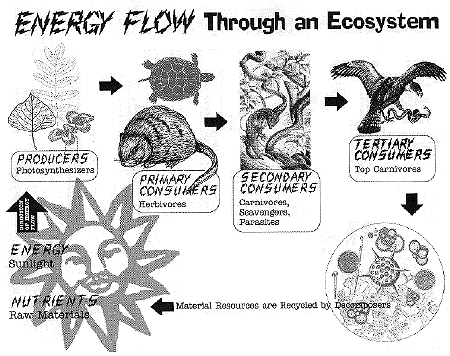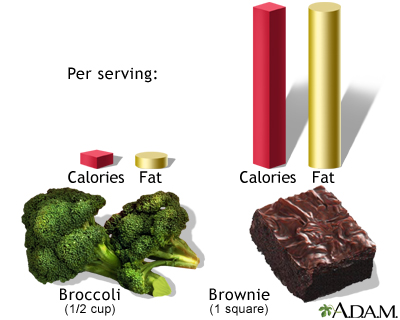Do you remember where do plants get their energy from?
Tuesday, December 18, 2007
Growing baby
Think about how our bodies grow and why choosing healthy food is important.
If you have any question, ask!
Friday, December 14, 2007
FOOD: Protein
![[Inside Outside Puzzle Human Body inside.jpg]](https://blogger.googleusercontent.com/img/b/R29vZ2xl/AVvXsEhn28vnHJ0O9EIT6mLjy6OP96migc9u68UP8qF1uzY3cm-hrO_KcSNNHYQjBLwoPG7LBR5VNIGEjeJI8Mz8_7ENjJl2xgtEunoQU9W8qzjXInNVvtHHauW8CqJfznSLcTGKUnRN4S-bCug/s1600/Inside+Outside+Puzzle+Human+Body+inside.jpg)
Proteins are the building blocks of our bodies. Like the bricks in a house, proteins are small compared to the size of our bodies. Nevertheless, as we grow our bodies add more bone and muscle tissue, and remember, what is bone and muscle made of?
What would you eat if you want to grow big, strong and smart?
You can try this recipe from: http://www.morinu.com/pressbox/AboutSoy.html
Southwestern Tofu WrapMakes 4 wraps
1 ripe medium avocado
6 ounces Mori-Nu Silken Tofu, Extra Firm Lite
1/4 cup minced red onion
Four (10-inch) flour tortillas
2 tablespoons lime juice
4 green lettuce leaves
1 canned chipotle in adobo sauce, finely choppped
1/2 teaspoon ground cumin1 medium tomato, diced
Cut the block of tofu in half; place one half in an air-tight container and store in the refrigerator. Place the remaining half on a stack of paper towels to drain the liquid. Set aside.
Slice the avocado in half the long way to reveal a large pit. Remove the pit, scoop out the flesh and place it in a large bowl; add the onion, lime juice, chipotle and cumin. Mix well with a fork until the avocado is mashed and the mixture is well blended. Set aside.
Slice the tofu into 1/4-inch dice cubes. Add the cubed tofu to avocado mixture; combine gently.
Warm the tortillas in a microwave for ~10 seconds or until soft. Top each tortilla with one lettuce leaf, 1/4 of the guacamole mixture, and 1/4 of the tomatoes. Fold the sides of one tortilla up and towards the center. Fold the bottom and top up to cover the filling, to encase the filling completely, making a neat packet. Repeat with the remaining tortillas. Wrap each one tightly in plastic wrap and refrigerate until ready to serve.
Always ask:
Nutritional Analysis Per Wrap:
Calories 230
Carbohydrate 28g
Fat 10g
Fiber 5g
Sat Fat 2.5g
Sugars 2g
Cholesterol 0mg
Protein 8g
Sodium 320mg
Soy Protein 3g
Where else can we find protein?
A hint:

Wednesday, December 12, 2007
Nicole's question: How can we know what is in our food and where does our food come from?

Another way of knowing what is in our food is to ask the person who grew it how did he or she did it. Of course, this can be very difficult if you get food from a supermarket. But if you visit your local farmers' market you can ask your local farmer directly!
Try at least once!
Farmers' Markets: Old Oakland
Location of Markets: 9th St. in Downtown Oakland
Days/Times: Fri 8am-2pmYear round/Seasonal: Year round, rain or shine
Public Transportation to Market: BART to Old Oakland Farmers' Market AC Transit to Old Oakland Farmers' Market
Phone: 510.745.7100
Email: urbanvillage@earthlink.net
Website: urbanvillageonline.com

Taste the difference.
Hydroelectic Power - How it Works
When we use water to generate electricity we call it hydroelectric power. Remember hydro=water
How can we get electricity from water?

Check out some dams in this pictures:



This is a picture of the turbines:

The largest hydroelectric plant of the world is the Three Gorges Dam in China:

Animals also build dams. Beavers for example build dams to live in:
Here is a picture of a beaver dam:

And this is a beaver:

Thursday, December 6, 2007
Greek dictionary
GRAPH = to draw (paint)
HYDRO = water
CIDE = kill
HOM = person
PHOTO = light
Food and energy

Remember, the number of calories tells us how much energy is within our foods.
Can you find the number of calories in this food label?
Water contamination

Water can get contaminated very easily. Can you find the sources of contamination here?

If water is not clean, water can become a poison.

Contaminated water kills:
Noe's question: Where does sweat come from?

When the temperature of our body increases, sweat helps us bringing it down. Can you find the origin of sweat in the picture above?
Our normal temperature is 37 degrees.
Water

How much water is within our bodies?

Our bodies are almost 80% water. Remember: There is water in our bodies as part of blood, saliva, etc, etc, etc, etc. Can you calculate how much water is within YOUR body?
Remember, it is around 75%
Monday, December 3, 2007
Our food (3)
Thursday, November 29, 2007
Our Food 2
An overview of how dietary fat gets digested, packaged, and sent to various tissues for storage or energy.
Energy and Ecosystems (Natural Environments)

Photosynthesis: energy from the sun is captured by plants and used to make food. Most of this energy is used to carry on the plant's life activities, the rest of the energy is passed on as food to the next level of the food chain.

Energy flows in a simple food chain. At each level of the food chain, about 90% of the energy is lost in the form of heat. Therefore, as you move up the food chain, there is less energy available.
NOTE!! Each organism in the food chain is only transfering one-tenth of its energy to the next organism.

Energy and Ecosystems (human impacts)
This film is based on the the brief to develop sustainable housing for urban megalopolis in China in 2020.
Our food (Food labels)
Food Labels Tell the Story!From the Label to the Table! |  |
What is in food?
Food provides your body with all of the materials it needs to grow, and to be healthy and active. These are some of the building blocks in food.
CARBOHYDRATES are the body's main source of fuel. Starchy foods like breads, spaghetti, rice, potatoes, corn and cereals are made up mostly of carbohydrates. Sugary foods like candy, jam and syrups also are carbohydrates. Some carbohydrates, called fiber or roughage, are hard to digest. They help move waste through the digestive system.
FATS include butter, margarine, lard, shortening, and cooking oil. Cheese, cream, chocolate, some meats and many desserts have a lot of fat. Fats are very concentrated sources of energy, so only a little is needed.
PROTEINS, are important for growth and repair of the body. Protein-rich foods include eggs, milk products, meat, dried beans, chicken, turkey, and fish. The body also can use protein as fuel for movement and growth.
MINERALS are found in small amounts in foods. They are needed for many of the body's functions. For example, calcium is used to build bones and teeth, and also is important for muscles and the nervous system. Iron becomes part of red blood cells.
VITAMINS are other chemicals found naturally in food. They are needed in very small amounts by the body.
Did you know that WATER also is a major part of almost all food?

Nutrition Facts -- the Labels on Food Products
Beginning in 1994, the US government began requiring manufacturers to put information about nutritional value on food labels. You can use this information to make better choices about what you eat -- watch for the following information:
- Pay close attention to serving sizes.
- Products labeled "light" or "lite" must have 1/3 fewer calories or 1/2 the fat of the foods to which they are compared. "Light" also can mean that salt has been reduced by 1/2.
- Look for foods with lower levels of saturated fats.
- The sodium level tells you how much salt is in food.
- Look for Products that have more fiber and less sugar.
- Vitamins and minerals help your body function properly.
- Calcium is important for bones and teeth.
- Use the "percentage of daily values" section of the label as a guide for daily planning.
- The amount of calories a person needs each day depends on many factors, including exercise.
From: http://kids.niehs.nih.gov/baylor/food3.htm
Wednesday, November 28, 2007
Food web


| Energy from the sun creates wind and rain. The wind helps scatter seeds for new plant and tree growth. Rain provides needed water. | |
| Trees and plants grow because they take energy from the sun and convert it to CHEMICAL ENERGY through a process called PHOTOSYNTHESIS. The chemical energy is stored in the plant as potential energy. | |
| When a bear eats a plant, the stored energy from the plant is converted to muscle energy... | |
...and the bear can climb a tree! So the sun allows the tree to grow and gives the bear the energy to climb it!
|
Blog Archive
-
▼
2007
(27)
-
▼
December
(20)
- Plants grow
- Growing baby
- The human body
- What are Proteins?
- Can you guess what is this?
- Anatomical model of the human body
- FOOD: Protein
- Nicole's question: How can we know what is in our ...
- Hydroelectic Power - How it Works
- How can we get electricity from water?
- Where does our food come from?
- Greek dictionary
- Food and energy
- Food and energy 2
- Water contamination
- Noe's question: Where does sweat come from?
- Water
- Food Pyramid
- Energy: The sun
- Our food (3)
-
▼
December
(20)





